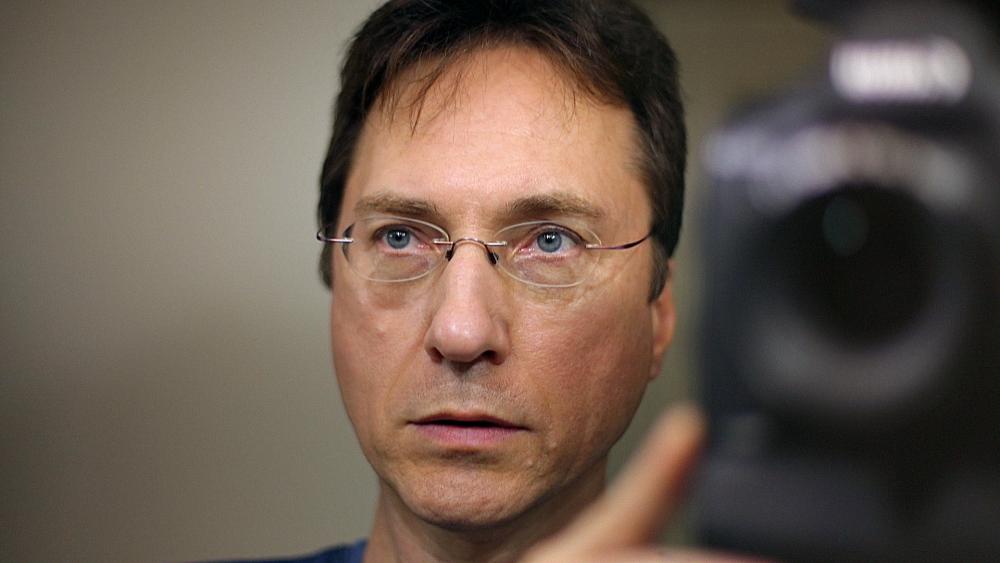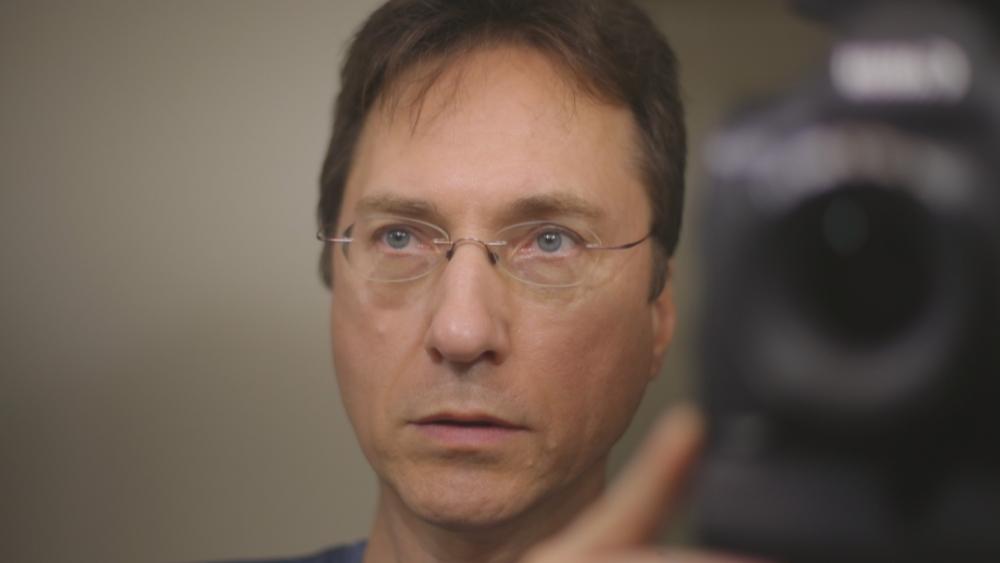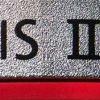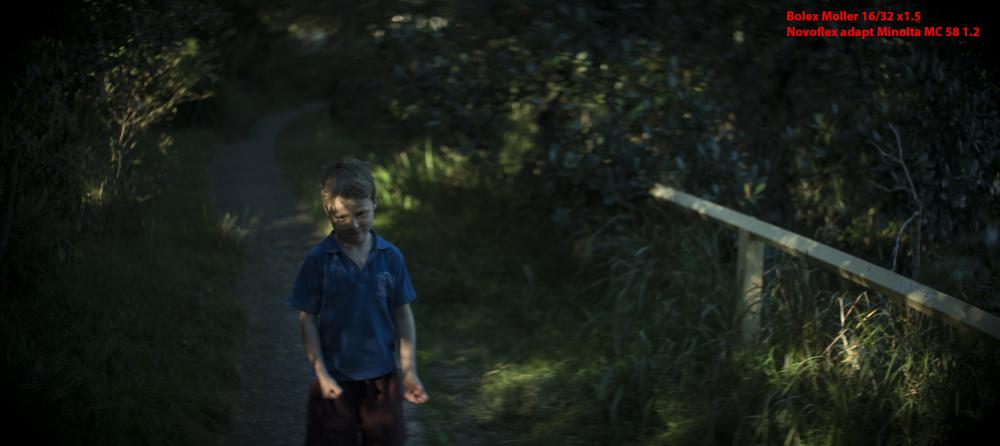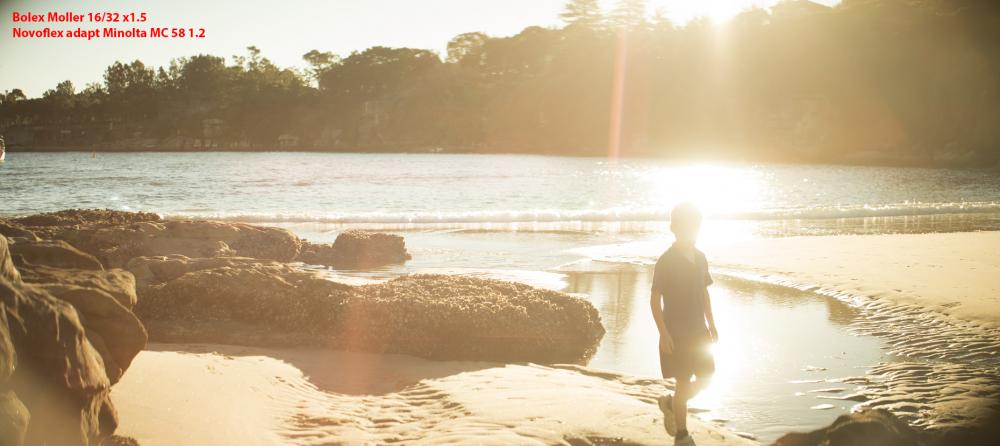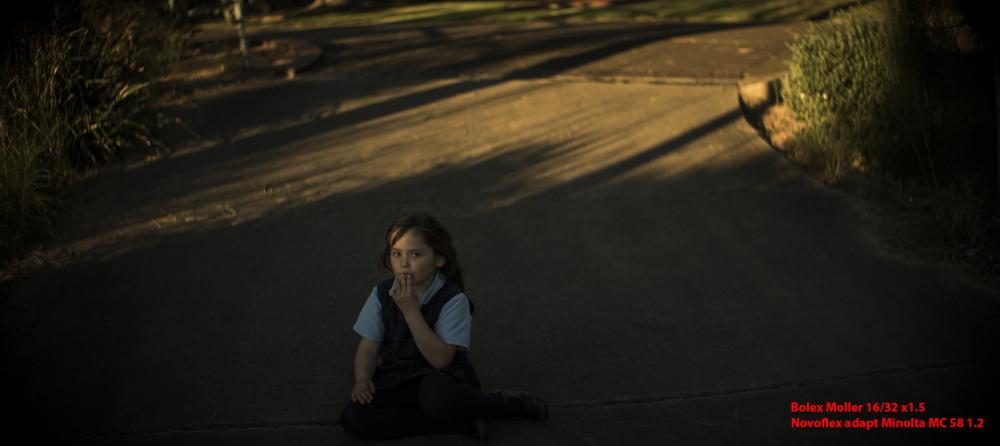Leaderboard
Popular Content
Showing content with the highest reputation on 08/12/2017 in all areas
-

External IRIS (20 blades) test with anamorphic and taking lens wide open
keessie65 and one other reacted to Dr. Verbel' for a topic
Low light anamorphic test Schneider ES Cinelux 2x (custom single focus) with external IRIS 20 blades . Camera: Sony a6300 (Slog2, SGamut3.cine, ISO 3200) . Anamorphic: Schneider ES Cinelux 2x with custom single focus . Taking lenses (wide open, external iris): Helios 44m-5 58mm F:2 PO-109-1A 50mm F:1.2 (projector lens without build-in aperture) .2 points -
Whats up with No Film School?
Kubrickian reacted to Mattias Burling for a topic
That place used to be cool. The comments on the page and their facebook have been so toxic lately that there imo is absolutely no point in having any sort of discussion there. There is not one single article, about anything that's not met with nothing but hate. It could be an article about world peace and everyone gets mad and want war. No moderation. At least the articles where decent imo. And then they started to slip, click bait, bad fact checking and so on. The latest example was the success story that Leica has gone so far into the green that the investor that holds a minority share of 45% is ready to make a return and become rich. Some bogus bloggers made up a story about it and that's what NOFS is reporting. Not the original content from a credible news agency. They are actually speculating that a bank selling a share with no money passing through Leica would "save" a very profitable an growing company... sigh. And that's just one example. Normally I don't get to upset but I actually liked NOFS. I thought it was a great blog. But lately.. I don't know. There still is alot good stuff and fascinating articles. Forums have been on a steady decline for a few years. The whole positive video movement is long dead imo. But there at least was the blogs and this forum is still on the up-n-up if you ask me. I don't really know what my point is, just venting. Lately I have accepted that its mostly just the "Ass-Burgers" left online (wrote a blog about that a year or so ago). The pros and artists are out shooting and the rest have moved on to other hobbies. This blog and forum I think is the only place where creativity and art can coexist with the charts people. But its a battle, I see the scene in 300 where they are pushing them out of the passage with their shields. Sorry for the rambling. Like I said, just venting. Stay strong1 point -
Sometimes we need to enhance the detail of a shot: a very soft lens, slightly out of focus, slow motion, post cropping (for story/emotion or after stabilization), and so on. Most are familiar with the sharpen effect and the unsharp masking effect. We can combine both effects, as well as use unsharp masking to create a local contrast enhancement effect as well. Canon 1DX II and Canon 50mm 1.4 at 1.4, 1080p (Filmic Skin picture style): Multi-spectral Detail Enhancement (let's call it MSDE, based on the physics of Acutance) Fine noise grain: adds texture and increases perception of detail (Noise effect: 2%, color, not clipped) High frequency sharpening: in PP CC this is called Sharpen (as a standalone effect) or via Lumetri/Creative/Sharpen (as used here: 93.4) Mid frequency sharpening: Unsharp masking effect with amount 41 and a radius of 5 Low frequency sharpening (Local Contrast Enhancement or LCE): Unsharp masking effect with amount 50 and a radius of 300 While this may be a bit too sharp/detailed for some, it illustrates MSDE, and one can add detail to taste using this technique. Note we didn't use a contrast effect or curves to achieve this look. MSDE can also be use to improve HD to 4K upscales: apply after upscaling. Also a great way to use Canon's soft-ish 1080p along with DPAF (since it's not currently available in any other cameras on the market). The GH5 is the new kid on the block with excellent detail, however Canon still looks more filmic to me and has excellent AF Someday Adobe will GPU accelerate their Unsharp Mask effect (it's a trivially easy effect to code too!), so this can easily run in real-time while editing.1 point
-
Why Shooting 4K?
mercer reacted to HockeyFan12 for a topic
I've never been that bullish on 4k video or it providing a significant or worthwhile improvement in real-world use. For UI elements on phones and computers I think a high res display is advantageous, but 4k video doesn't look significantly better to me at normal viewing distances (except maybe for line art and 2D animation). I recall that the text on my projector from my PS4 looks pixellated but the video never does. For VR I think higher resolutions are going to be particularly important, for video and UI elements alike. The statistic you posted is misleading. Most of us are in the US or developed countries that have at least a majority HD infrastructure and even if we're selling to other markets that don't have HD, those markets are less important to our revenue stream. I think all of us benefit from shooting HD. I think most of us know whether our clients will pay more for 4k and it's really just a cost-benefit analysis at that point. Or as hobbyists, we decide that cost-benefit analysis subjectively. Personally, I prefer working with 2k or 1080p media both professionally and as a hobby. I hate doing the extra busy work or waiting on the extra renders and I don't see any difference in real-world use. I just don't see the difference, but my eyes are now 20:30 or 20:20. When I was young and they were 20:15 I bet I tell the difference even with video at a normal viewing distance. I do think VR video is too low res now and that will need to be acquired at 8k or 16k or beyond to look good. I don't personally expect that most tv networks will upgrade their infrastructure to 1080p in the US or abroad. Upgrading to HD was recent and very expensive. Their libraries are all 1080p anyway, and finished as such. But I do think tv will eventually be displaced by Netflix, YouTube, Amazon, etc. which already have 4k infrastructure. So watching how that market changes and evolves and tracing those viewership graphs will probably give a pretty good idea when 4k will become widely demanded. CBS won't push its shows to 4k for air. Not ever, I think. But Netflix might push them to shoot in 4k so they can license a 4k deliverable for their own distribution. When networks earn more money from licensing 4k to Netflix than they suffer in added production cost shooting in that format (fwiw, the added cost is deceptively enormous for larger productions), we'll see a quick change. That won't be too soon. But it will happen soon enough. Probably sooner than we think! I bet Arri is targeting a true 4k Alexa for before that date. Personally, I'm in no rush at all to upgrade, but that's just me! I know a lot of people here are primarily targeting Netflix Original distribution (based on posts I've read). I still think 1080p is fine for that. They'll acquire 1080p movies as originals; they just won't produce 1080p series. So I wouldn't worry about that. TL;DR: People shooting 4k did a cost-benefit analysis and 4k provided more profit from their clients, which in that case are the only clients who matter, or they just want to because they're hobbyists, in which case their preferences (and bank account) are all that matter.1 point -
GH5 Issues One Month Ownership
TheRenaissanceMan reacted to Fritz Pierre for a topic
A workaround for the display button is actually a modification...get a small clear silicone bumper (used kitchen cabinets)...any hardware store....cut out the center part, peel of the sticky protector and stick it over the display button...that makes depressing accidentally impossible yet you can still reach it with something small enough...I never change it from the display I prefer with the level horizon line...my sollution for the shutter angle is always looking in the LCD before rolling, but it is a PITA!1 point -
Much depends on who your clients are and what you use the camera for, I mainly shoot weddings and 4K had given me nothing but advantages: I am selling a 4K file to my clients since this year (for 2018-19 weddings) as a paid option, About 7 out of 10 clients takes it, not because all are able to benefit from it now but they will in years to come. 4K might not be "standard" now but it eventually will be. Some of my clients do have a big 4K screen, I have one too to showcase 4K, 4K on a big screen looks much nicer then 1080p does. I often get the question if it's not possible to take framegrabs from my films, it is not a substitute for photography but it can be an addition for shots the photographer have missed and a 4K framegrab is a lot better then a 1080p one when they want to print photos. I also take framegrabs from 4K footage for prints that I use on my blu-ray's, I used to take photos but now I don't have to switch anymore and just concentrate on video and take out high rez framegrabs out afterwards, instead of 1 photo I now have 25 photos every second to choose from. The weddings I shoot this year are still delivered in 1080p and there I make use of the cropping ability in post which can make a difference if you are a solo shooter, I know I will loose that option once I deliver in 4K but that inconvenience is quickly forgotten if I see that I can charge 20% on top of my package price for almost no extra work. There will come a moment that 4K might be standard and I can't charge extra for it anymore but that I feel is still a few year away. My clients always get a 1080p file as well, together with the 4K one if they have choosen for that and downscaled 1080p from 4K looks better then when I shoot 1080p, I have several 4K capable panasonic camera's and they all produce better looking footage in 4K with less artifacts. My workflow is hardly affected, I do have more data to handle (a average wedding is between 200 and 350GB) but it doesn't slow my workflow down, I edit all my 4K files natively in Edius and in real time on a 3 year old computer, this includes multicam and colorcorrecting my footage or applying luts. Exporting is also very fast since Edius uses quicksync to accelerate rendering. So as you can see for some areas 4K has it's benefits but I can understand it doesn't have the same advantages for many others.1 point
-

GH5 - major lag via HDMI out to ext. recorders?
deezid reacted to Andrew Reid for a topic
The internal codec is so good on the GH5 you don't need to record externally, so maybe get a monitor with minimal processing inside for fast latency. Some of the recorders might be doing more work, and deliver a delayed result.1 point -
believe me i know. I've been doing exactly that for years. i understand the advantages and disadvantages. full frame is fun and I enjoy shooting in it, but in this case, I *want* a super35 (1.5x) sensor digital cinema camera to shoot films with. I want that because that's the standard I'm used to for motion pictures. besides, I don't like using a focal reducer with my vintage lenses because they exacerbate blooming, CA, and soft corners for apertures wider than f/2.8, which negates the advantage of the metabones' extra stop, or more. fortunately, I won't need that extra stop with a native 2500 ISO (providing it's just as clean as 800 which we have yet to see from the EVA1). and last, I have the 5D3/MLRAW option for when I want the full frame look (which I'm also a fan of for the right project). side note: I used to own a good bit of MFT lenses when I was an AF100 and then GH4 owner. always found them a little too small to operate with my big bear paws. the contax zeiss I'm using now look f***ing amazing and suit me better. I appreciate what your saying. just offering a different pov. yes, two actually. and the latest is finally getting a release date for late this year or early next. in talks now with the distributor.1 point
-
GH5 will be much sharper (higher resolution). The G85 1080p is ok when there isn't much movement in the frame and you don't need to grade/adjust much in post. The GH5 will withstand motion better, and you can shoot in 10-bit 4:2:2 in 1080p.1 point
-
This is correct, and (once again) the OP equated 4k solely with distribution resolution. There are several reasons to shoot 4k: (1) Allows reframing in post (2) May allow better stabilization in post provided the shot is framed a little loose. OTOH digital stabilization often induces artifacts so the goal is not use this. (3) Each frame is an 8 megapixel still so frame grabs are a lot better. (4) Shooting in 4k may give better "shelf life" for the material, similar to how shooting TV color did in the 1960s. Even though initially few people had color TVs, eventually everyone would so the additional cost of color film was often worthwhile. (5) Large 4k productions impose a major new post production load. It is vastly harder than 1080p due to the volume and possible transcoding and workflow changes. When my doc group shot H264 1080p we could just distribute that in the post-production pipeline without a thought. With H264 4k, it must be transcoded to proxy, collaborative editing often requires a proxy-only workflow which then can expose complications for re-sync, etc. The reason this is an argument *for* 4k is it takes a long time to figure out the post production issues. Computers won't be much faster next year, so if you're *ever* going to transition to 4k and are shooting multicam and high shooting ratio material, you may as well start the learning curve now. Arguments against 4k: It may not look much (or any) better than good quality 1080p when viewed on typical playback devices, so why take the huge hit in post production. It can actually look worse than 1080p, depending on what cameras are used. Even though #5 above was listed as a 4k advantage, this is also one of the strongest arguments *against* 4k: the huge post production load. Whether you shoot in ProRes, DNxHD, H264, etc. it can be a huge burden. Worst of all is H264 since few computers are fast enough to smoothly edit this. Therefore it generally requires transcoding, proxies, and various knock-on effects regarding media management. It's not that bad if playing around with 4k or shooting a little commercial, but for larger productions I'd roughly I'd estimate it's over 10x (not 4x) as difficult as 1080p from an IT and data wrangling standpoint.1 point
-
Some cameras can capture 1080p nativity that looks good when displayed on a 1080p device. Other cameras need to capture at a higher native resolution in order to produce good 1080p. Shooting with a higher resolution than the output is perfectly normal in stills photography and the same applies to video. More resolution than the output size allows re-framing, straightening, image rectification and stabilisation in post production without compromising the resolution. When 4k output becomes the norm then likley 6/8k capture will be required......1 point
-
@jonpais I agree with some of that. I think you would be hard pressed to get NX1 footage to have the same depth, texture and highlight roll off as shown in that screen grab, though but maybe. As I said earlier, I think people should use whatever camera they feel comfortable with. If they like 4K, then they should shoot 4K. If they like 1080p or can only afford 1080p, then shoot with 1080p. In the 2+ years I've been around here, I have learned a ton, but I've also learned that I am not a particularly talented or skilled operator, but I love filmmaking. I was ready to quit it all as it was becoming way too expensive of a hobby without getting results I felt comfortable with. And then I made a Hail Mary pass and bought the 5D3 and it all came together for me. I'm still not nearly as talented or skilled as I'd like to be, but at least I can look at my shots and not feel angst. But even with that gratification I missed small cameras and small file sizes. So I convinced myself that I needed a small mirrorless 4K camera for casual video, or at least a camera that has IBIS. I bought and sold, or returned, a few more and have never been happy with the results. To this day, I have only liked the images I was able to shoot with either my D5500 or my 5D3. I made a couple 4K videos from my NX500 days that were okay, but I had plenty more failures than successes with that camera. So when I speak of 4K vs 1080p, my opinion is based solely on my very specific history with various cameras and my skill set with using them. And my only interest in video is for narrative work. I could not care less about any other form of videography and what is deemed acceptable or even beautiful for those disciplines. With that being said, I wish you could get your hands on a 5D3 or a BMCC for a week to give them a test ride. I think you would have a different opinion of them and 1080p when seen in Raw. You already have seen how beautiful 1080p ProRes is. Or get, or borrow, a BMPCC and put one of those fancy 12mm lenses you have on it, I think you'd be blown away by it.1 point
-
I'm not really "over" IBIS, I've just realized I don't "need" it. But I would love an LS300. Maybe after I sell a screenplay. I think the multi sized sensor and prime zoom of the LS300 are some of the best advancements in the past 5 years. If Panasonic thought of it, it would be the most praised tech on this site. Lol.1 point
-
I just don't understand why they haven't done a swappable version. The swap on an Epic between PL and Canon mounts takes a few minutes with an allen key and even with RED doing their macho bullshit styling and etching everything in BOLD CAPITALS on it can't get it to be over $700 (although inevitably they have also an operation-desert-storm-kevlar-titanium-and-granite version of it for a gazillion quid). The bottom line though is even doing a swappable version is all a bit of a wheel re-invention as having an MFT mount on it from the get go just gives you more options. They could've gone as far as bundling it with a Metabones smart EF Speedbooster and I think everyone would've been happy. It won't stop me buying one as I wasn't going to anyway so maybe they have listened to the right focus group from that perspective ! Now you're 'over' IBIS the future AF200 for you is the current LS3001 point
-
I can't see how the delay on the GH5 itself could vary depending on the monitor/recorder used. I think it's just that cheap monitors add some additonal delay of their own.1 point
-
.jpg.d886fb759513ad56dc4a3adc01c93c2a.thumb.jpg.2cd049b54bc05dcaf5f83dd8b81fbe9b.jpg)
GH5 Issues One Month Ownership
AaronChicago reacted to manueldomes for a topic
I inverted the shutter and aperture dials setting, so that at worst I accidentally change only the aperture (front dial is more unlikely to move unintentionally, at least for me). And since I shoot with a speedboosted sigma 30mm 90% of the time, the back wheel is basically deactivated.1 point -
@tomekk @tupp frequency separation is very similar to what MSDE does. It uses a high-pass filter and Gaussian blur in the spatial domain: https://fstoppers.com/post-production/ultimate-guide-frequency-separation-technique-8699 Wavelet's operate in the frequency domain (same as Fourier transforms (+DFT/DCT) with different pros/cons). For wavelet frequency filtering, an image is converted into a wavelet, desired frequencies are filtered, then the wavelet is converted back into an image. Note no compression or decompression takes place (same with a DCT and inverse DCT, which can also be used for frequency filtering). The GIMP plugin performs a wavelet transform which allows frequencies to be decomposed (vs. decompressed) and filtered before converting back into an image. Yeah, it's puzzling that Photoshop doesn't provide frequency-based filtering options or that no one's made plugins for Photoshop/Premiere/AE/FCPX/Resolve etc. For retouching stills, I haven't used frequency separation since I got Portrait Pro: http://www.portraitprofessional.com/.1 point
-

Jvc GY-Ls300 finally gets 4:2:2 4k and other gifts!
Justin Bacle reacted to tupp for a topic
Wait... Panasonic had to go EF with the EVA1?1 point -
Actually, Panasonic would be getting a much more serious and versatile camera for very little extra in cost. There has to be some sort of "tube" or enclosure going from the sensor to the lens mount. So, having that "tube" as a separate piece doesn't require much extra in materials, but it adds a whole heck of a lot to the capability (and maintenance) of the camera. The extra costs would be for: a separate die-cast piece (could be incorporated in the same die as the rest of the camera housing); one to four threading operations in the camera body (about US$2 each); a deburring operation; a powder coating (again, no extra materials here); wiring/contacts for the EF electronics (US$30?). Such a small expense is negligible to such an expensive camera, but a removable front would greatly enhance what lenses and adapters/speedboosters one can use. Who said anything about using Panasonic lenses? That is the kind of narrow thinking that produces cinema cameras with EF mounts! A removable front would literally open the camera up to a whole world of lenses, including professional cinematography lenses offered in PL mount, PV mount, C-mount, Arri Bayonet mount, and it would even allow the attachment of "Minolta, Konica, or FD lenses (which all have very nice optics)." Additionally, such a feature would enable the use of focal reducers (extra stops and wider view angle), tilt/swing adapters, macro bellows, helical mechanisms, and other lens modifiers. Certainly, the typical walled-garden EF shooter is not interested in such versatility, but this multitude of possibilities would be very useful to cinematographers who want to create interesting images and who want to get an edge on the "straight" shooters. Again, the additional manufacturing cost for a removable front would be minimal, and the EF shooters would never know the difference.1 point
-
150 Mbits LGOP only at the moment, not really the perfect codec... The title of the post is C200 or 1Dx II for 4k 60p ....on paper both ar better than EVA1 for the OP. Real life could be different1 point
-
... Not to mention that Panasonic could customize the external housing of the smart adapters to follow the form of the camera, employing a extra reinforcement flange that bolts the adapter to the camera body. Clueless EF shooters would mount (and electronically control) their lenses with no wobble... and they would be none the wiser that they were actually using an adapter!1 point
-
1 point
-
1 point
-
The Bolex-Anamorphot 16/32/1.5x thread
buggz reacted to Dick Sweeney for a topic
Adding paint on more paint - the Minolta 58 1.2 plus the Bolex - this time with a Novoflex adapter - for hopefully more critical focusing - but yep still hard to nail it. This is a sweet vibe - almost too much for stills but certainly has hope for the motion world. Yes soft - but the OOF areas look so different and organic - and the flairs can be radical - almost futturistic and techno......1 point


